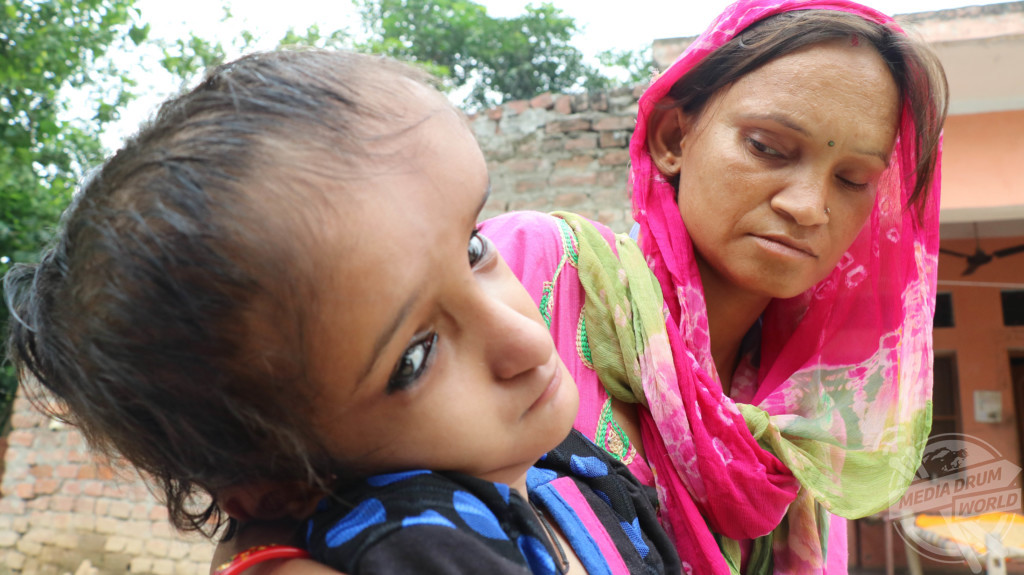By Mark McConville
THIS UNFORTUNATE teenager’s head won’t stop growing after a fall left her with a rare disease.
Shocking pictures show the 15-year-old’s 27-inch head being held up by her mother as she can no longer support its weight independently.
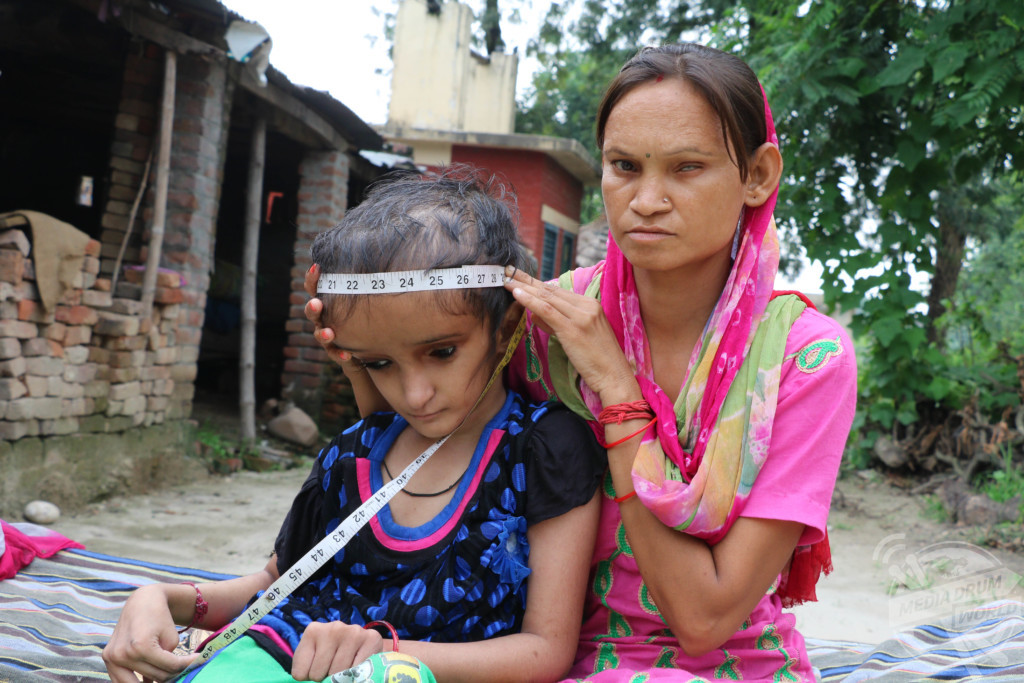
Rareshot News / mediadrumworld.com
Other heart-breaking images show the despondent teen hug her dad, have her head measured by her mum and display the results from a scan.
Shivani Kumari (15), from Himachal Pradesh, India has been suffering from hydrocephalus disease for the last three years after she fell.

Rareshot News / mediadrumworld.com
“Shivani was born normal but one day she fell down while playing with her friends,” said her mother, Kushla Devi.
“We carried her to the local doctor but he referred us to the higher medical institute.”
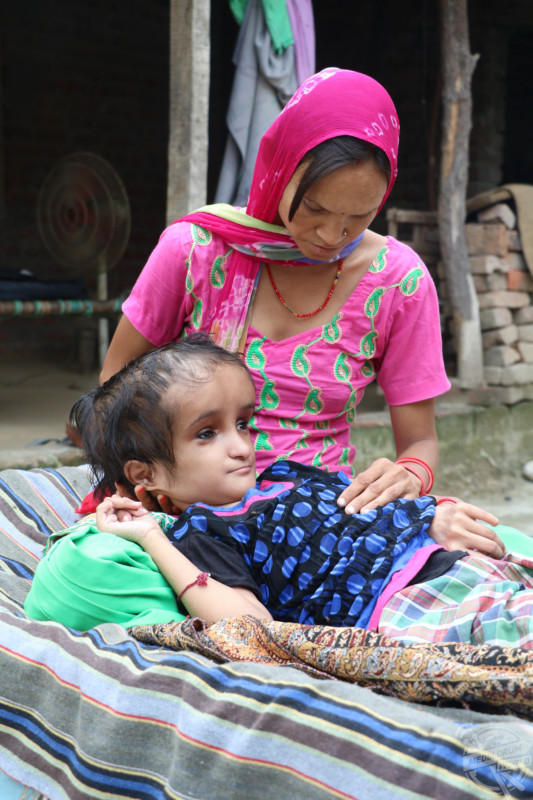
Rareshot News / mediadrumworld.com
Hydrocephalus is a condition in which there is an accumulation of cerebrospinal fluid (CSF) within the brain. This typically causes increased pressure inside the skull.
Older people may have headaches, double vision, poor balance, urinary incontinence, personality changes, or mental impairment. In babies there may be a rapid increase in head size. Other symptoms may include vomiting, sleepiness, seizures, and downward pointing of the eyes.
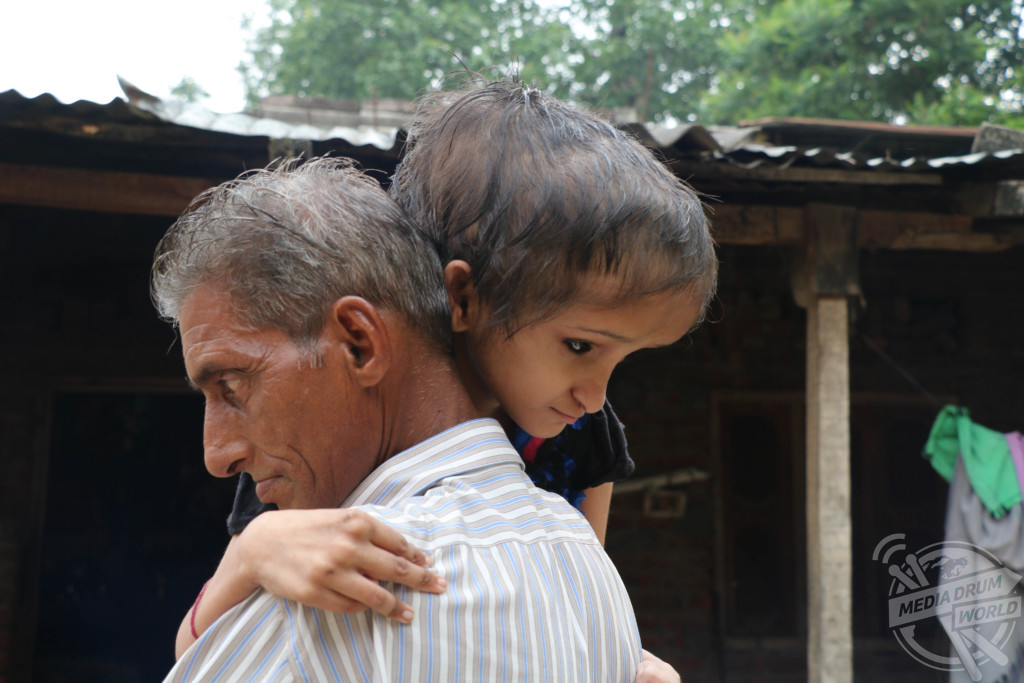
Rareshot News / mediadrumworld.com
Hydrocephalus can occur due to birth defects or be acquired later in life. Associated birth defects include neural tube defects and those that result in aqueductal stenosis.
Shivani is unable to walk or sit independently due to the size of her head which a doctor at the region’s biggest government hospital explained is caused by the presence of water.
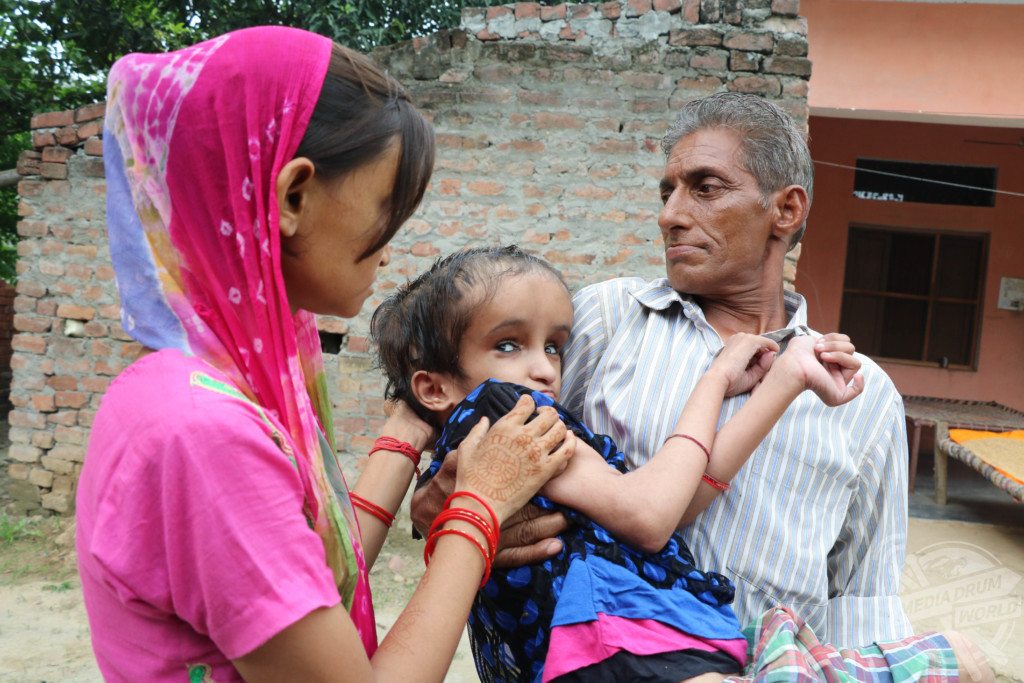
Rareshot News / mediadrumworld.com
Doctors suggested surgery which would cost around £1,200 but Shivani’s father Gurmeet Singh (40) only works as a casual labourer and is unable to afford this amount.
Villagers are sympathetic towards Shivani and nobody makes fun of her but they think that her condition is predestined due to sins in a previous life.

Rareshot News / mediadrumworld.com
The family, unable to afford treatment, are hoping for a miracle so that one day she will get better.
Hydrocephalus can be successfully treated by placing a drainage tube (shunt) between the brain ventricles and abdominal cavity. There is some risk of infection being introduced into the brain through these shunts, however, and the shunts must be replaced as the person grows.
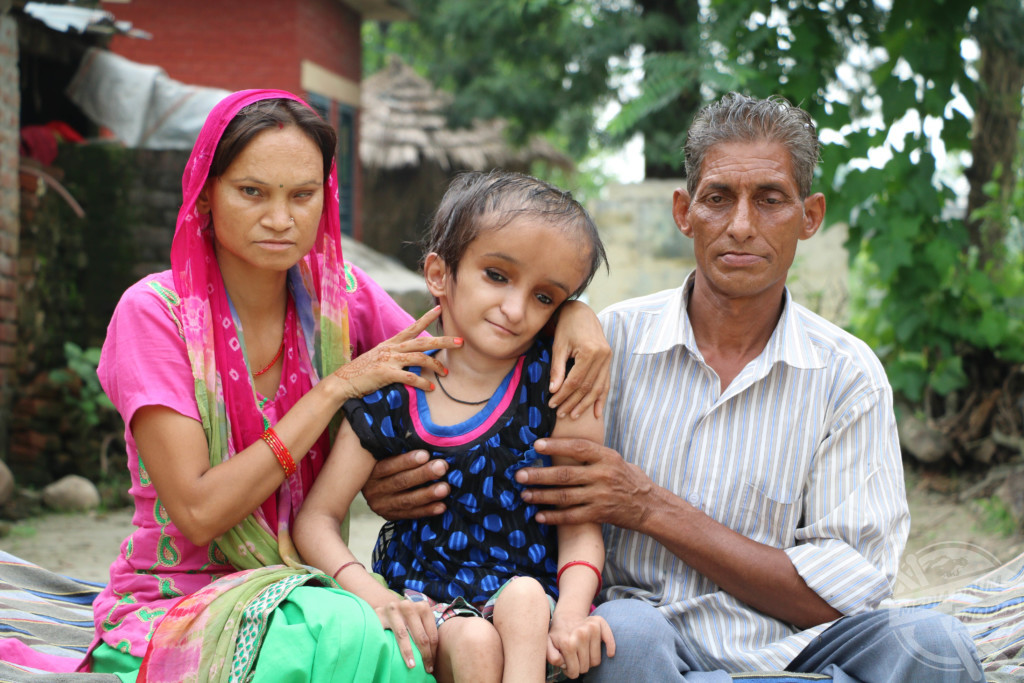
Rareshot News / mediadrumworld.com
Because the shunt systems are too expensive for most people in developing countries, such people often die without getting a shunt. Worse, the rate of revision in shunt systems adds to the cost of shunting many times.
For more information see www.mediadrumworld.com

